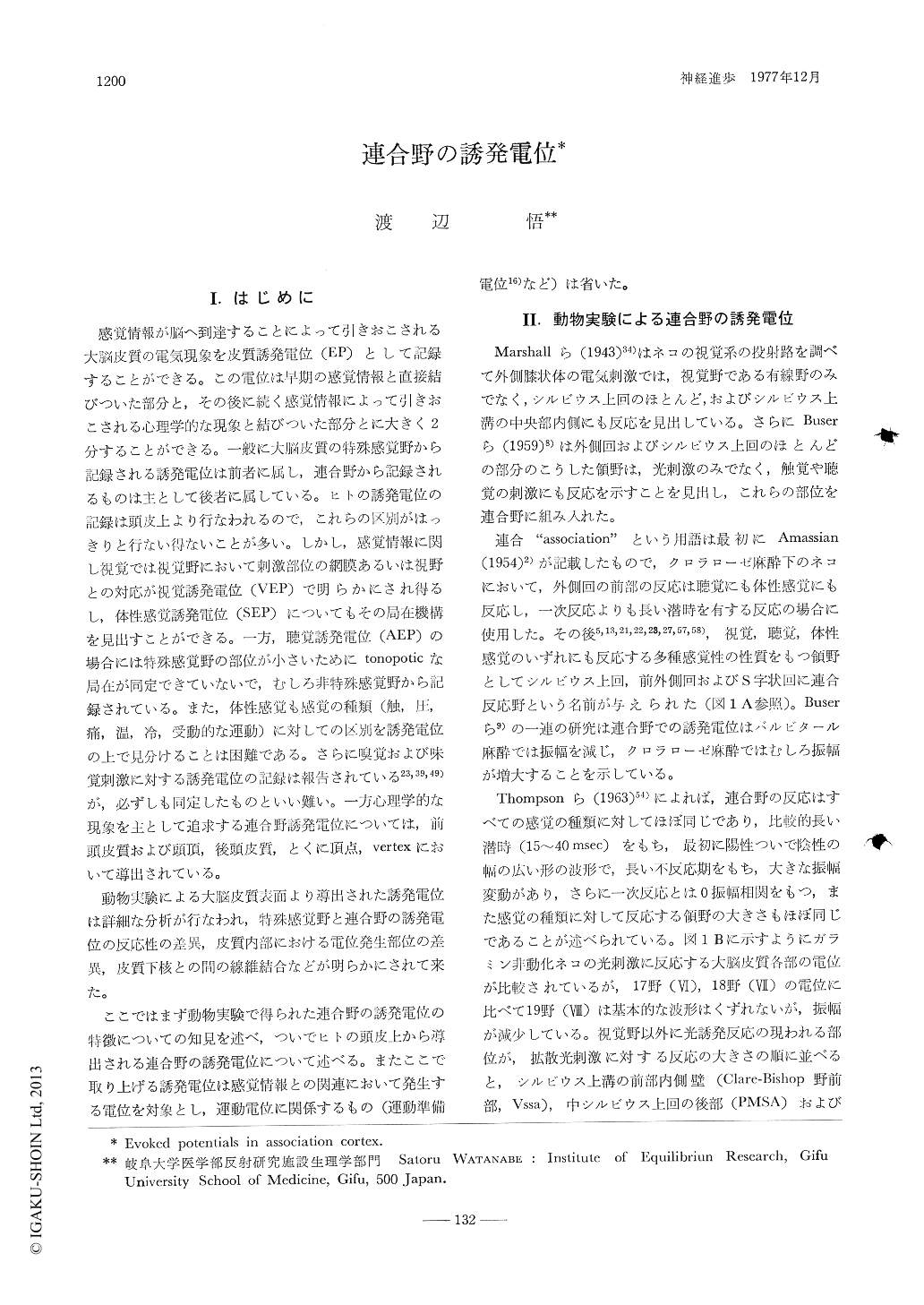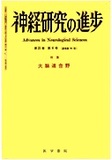Japanese
English
- 有料閲覧
- Abstract 文献概要
- 1ページ目 Look Inside
I.はじめに
感覚情報が脳へ到達することによって引きおこされる大脳皮質の電気現象を皮質誘発電位(EP)として記録することができる。この電位は早期の感覚情報と直接結びついた部分と,その後に続く感覚情報によって引きおこされる心理学的な現象と結びついた部分とに大きく2分することができる。一般に大脳皮質の特殊感覚野から記録される誘発電位は前者に属し,連合野から記録されるものは主として後者に属している。ヒトの誘発電位の記録は頭皮上より行なわれるので,これらの区別がはっきりと行ない得ないことが多い。しかし,感覚情報に関し視覚では視覚野において刺激部位の網膜あるいは視野との対応が視覚誘発電位(VEP)で明らかにされ得るし,体性感覚誘発電位(SEP)についてもその局在機構を見出すことができる。一方,聴覚誘発電位(AEP)の場合には特殊感覚野の部位が小さいためにtonopoticな局在が同定できていないで,むしろ非特殊感覚野から記録されている。また,体性感覚も感覚の種類(触,圧,痛,温,冷,受動的な運動)に対しての区別を誘発電位の上で見分けることは困難である。さらに嗅覚および味覚刺激に対する誘発電位の記録は報告されている23,39,49)が,必ずしも同定したものといい難い。一方心理学的な現象を主として追求する連合野誘発電位については,前頭皮質および頭頂,後頭皮質,とくに頂点,vertexにおいて導出されている。
The evoked potentials (EPs) recorded from the cortical surface can be divided into to main phases: an early component directly related to the sensory information process and a late com-ponent related to the psychological events produced by the preceding sensory information.
The evoked potentials in the association cortex are especially closely related to the late component. Animal experiments have shown that the "association cortex", as its name implies, is a polysensory center where all sorts of sensory modulities associate and integrate.

Copyright © 1977, Igaku-Shoin Ltd. All rights reserved.


